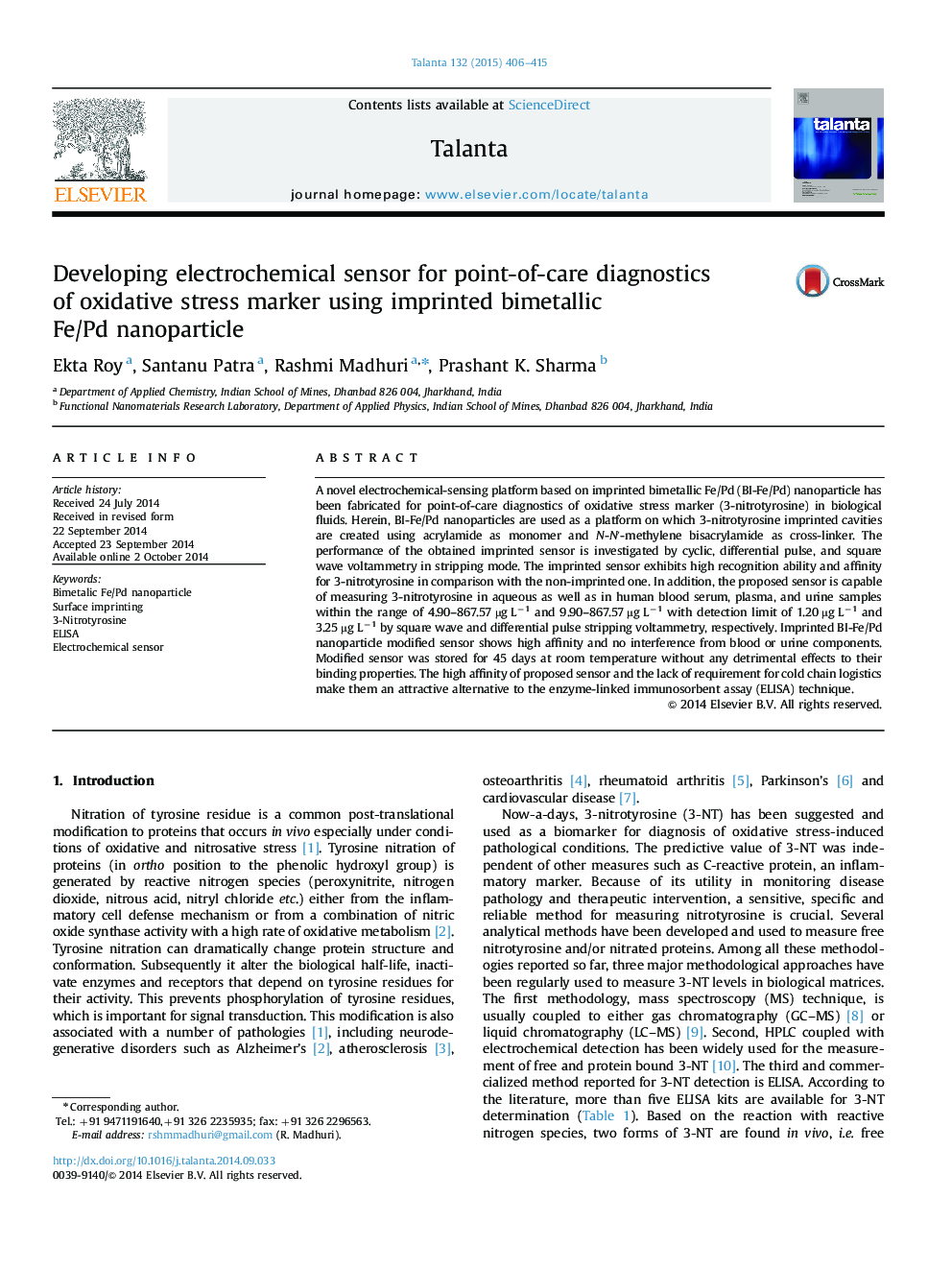| کد مقاله | کد نشریه | سال انتشار | مقاله انگلیسی | نسخه تمام متن |
|---|---|---|---|---|
| 1242034 | 1495803 | 2015 | 10 صفحه PDF | دانلود رایگان |

• Herein, surface-imprinting technology has been implemented for sensor fabrication.
• Bimetallic-Fe/Pd nanoparticle was used as a platform for 3-nitotyrosine imprinting.
• This sensor can able to detect free as well as protein-bound nitrotyrosine group.
• The sensor can be used as replacement of comercially available ELISA techniques.
• This sensor is better in terms of cost, analysis time, storage, and reusability.
A novel electrochemical-sensing platform based on imprinted bimetallic Fe/Pd (BI-Fe/Pd) nanoparticle has been fabricated for point-of-care diagnostics of oxidative stress marker (3-nitrotyrosine) in biological fluids. Herein, BI-Fe/Pd nanoparticles are used as a platform on which 3-nitrotyrosine imprinted cavities are created using acrylamide as monomer and N-N′-methylene bisacrylamide as cross-linker. The performance of the obtained imprinted sensor is investigated by cyclic, differential pulse, and square wave voltammetry in stripping mode. The imprinted sensor exhibits high recognition ability and affinity for 3-nitrotyrosine in comparison with the non-imprinted one. In addition, the proposed sensor is capable of measuring 3-nitrotyrosine in aqueous as well as in human blood serum, plasma, and urine samples within the range of 4.90–867.57 µg L−1 and 9.90–867.57 µg L−1 with detection limit of 1.20 µg L−1 and 3.25 µg L−1 by square wave and differential pulse stripping voltammetry, respectively. Imprinted BI-Fe/Pd nanoparticle modified sensor shows high affinity and no interference from blood or urine components. Modified sensor was stored for 45 days at room temperature without any detrimental effects to their binding properties. The high affinity of proposed sensor and the lack of requirement for cold chain logistics make them an attractive alternative to the enzyme-linked immunosorbent assay (ELISA) technique.
Figure optionsDownload as PowerPoint slide
Journal: Talanta - Volume 132, 15 January 2015, Pages 406–415